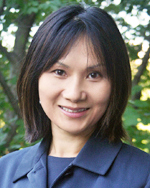
Program Announcement: PAR-24-325
Background
For many years, the NIH has recognized that the application of principles and techniques from physics, mathematics, chemistry, computer sciences, and engineering can be used to solve significant biomedical problems, leading in turn to new understanding of biological processes, novel products, and innovative tools to improve health. Such solutions typically require inter-disciplinary, multi-institutional partnerships to combine strengths unique to each group. Moreover, it is essential to engage industry for the eventual broader application and adoption of the technologies and tools to realize the full potential and bring the benefits of these technological innovations to patients. The academic-industrial partnership model is expected to more readily overcome barriers to accelerating the development and adoption of promising tools and technologies faced by either academia or industry working alone.
Goals and Objectives
The primary objective is to support milestone-driven, targeted technological development projects through strategic alliances and partnerships between academia and industry. The partners are expected to establish a robust engineering solution and develop tools and technologies that fulfill an unmet need in biomedical research or the practice of medicine. The goal is to support technological innovations that deliver new capabilities which can realize meaningful solutions within 5 – 10 years.
Key Elements that set the BPI apart from the Parent R01 NOFO
- As written in the BPI PAR, there are several key elements that are required for this NOFO, including:
- A clear description of both Industrial and academic partners’ involvement and roles.
- A leadership plan that involves both industrial and academic partners.
- A set of specific milestones (quantitative when appropriate) and timeline.
- A specific endpoint and deliverables within 5-10 years.
Applicants planning to submit a BPI application with direct costs exceeding $500,000 in any one year are reminded that they must submit a white paper (see below) and seek written agreement from the NIBIB staff at least 6 weeks prior to the application receipt date. Applicants are encouraged to contact the NIBIB staff well in advance of the 6-week deadline to discuss their planned application.
Application Budget
NIBIB’s policy (that does not apply to NCI, NEI, NIA) is to only consider applications with a maximum budget of $600k/year for a maximum of 5 years. If you are considering applying to the other participating institutes (NCI, NEI, NIA), please contact the contacts referenced at the bottom of this web page for any conditions that apply to their institute-specific funding policies.
BPI White Paper Budget Table Template (Excel Worksheet)
Areas of high programmatic interest include:
- intelligent systems design and smart modeling
- enabling nanotechnologies for designed drug and gene delivery vehicles
- in vivo optical imaging
- activatable imaging agents
- multiscale modeling in biomedical systems
- sensor and lab-on-a-chip devices for point-of-care testing
- imaging informatics
- development of engineered 3D human tissue model systems
- image-guided interventions
- in vivo microimaging of internal organs
- techniques for characterization and modification of biomaterial interfacial properties
- high-field and high speed (parallel) MRI
- high-frequency and very high-frequency ultrasound imaging and other applications
- novel sensing technologies
- enabling technologies for tissue engineering and regenerative medicine
- high-intensity focused ultrasound (HIFU) therapies or interventions
- computational analysis and simulation methods
- improvement of radiological diagnostics, image-guided therapies, and human health
- clinical decision-making support systems
- in-home treatment monitoring
- next-generation intelligent image and data analysis tools
- mobile health
- new technologies enabling direct imaging of targeted radio-therapies
Funding Opportunities
Bioengineering Partnership with Industry (U01 Clinical Trial Optional) PAR-24-325

